 |
| Sunflower seed shortly after sprouting |
environmental class
Thursday, December 13, 2012
Sunflower
My sunflower seed sprouted about 4 weeks ago and grew to about 4" in height by the end of the semester. I actually grew it in the cup holder of my car and gave it some water almost every day. I drive to and from school each day, often eating breakfast and lunch on the way, so I always had water with me to give to the plant. I was surprised by how well it grew in my car, but it did receive plenty of sunlight and water as well as a good half hour minimum of music each day...which may or may not have helped it grow.
Mitochondrial Eve
 |
| Mitochondrial Eve |
Rose Hill Cemetery
http://historicrosehillcemetery.org/about.asp
Additionally, as a photography minor, I have taken hundreds of photographs in Rose Hill, including black and white film photos, like the one below.
Ocmulgee National Monument
Those who first settled in what is now the Ocmulgee National Monument did so for a variety of reasons. First among them was its location along the river, which provided them with a source of water, vital to life and essential for food production. Second, the fertile soil in the area surrounding the river provided the perfect conditions for a variety of crops to grow in. Colonists later settled the area for some of the same reasons, but they also used the river as a means of transporting goods to other locations. Highways and railroads were also constructed through Macon, making it a prime location for settlement, while also maintaining easy access to nearby cities like Atlanta, Savannah, and Columbus.
http://www.nps.gov/ocmu/historyculture/index.htm
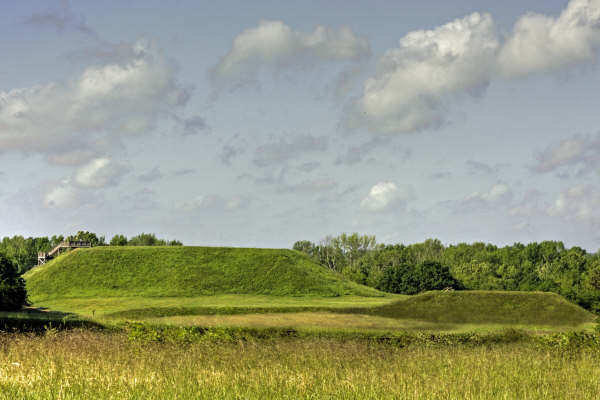 |
| Ocmulgee Mounds |
Monday, October 22, 2012
rocks & minerals
Rocks
Igneous
Granite--quartz, feldspar, & hornblendeDiorite
Basalt (columnar)
Pumice
Magma--below ground
Lava--above ground
 |
| Diorite |
"Diorite is a grey to dark grey intermediate intrusive igneous rock composed principally of plagioclase feldspar (typicallyandesine), biotite, hornblende, and/orpyroxene. It may contain small amounts of quartz, microcline andolivine."
"Diorite is a relatively rare rock; source localities include Leicestershire; UK (one name for microdiorite - Markfieldite - exists due to the rock being found in the village of Markfield),Sondrio, Italy; Thuringia and Saxony inGermany; Finland; Romania; Northeastern Turkey; central Sweden; Scotland; the Darrans range of New Zealand; the Andes Mountains; the Isle of Guernsey; Basin and Range province; Minnesota in the USA, and Idahet in Egypt.
An orbicular variety found in Corsica is called corsite."
Metamorphic
igneous rock under pressure; crystal structure transformedGneiss
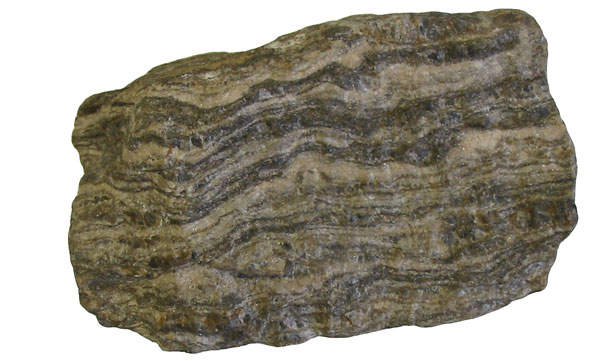 |
| Gneiss |
Sedimentary
sediment turned into rockShale
Slate
Sandstone
Siltstone
Shellstone: coquina
Limestone
Kaolinite
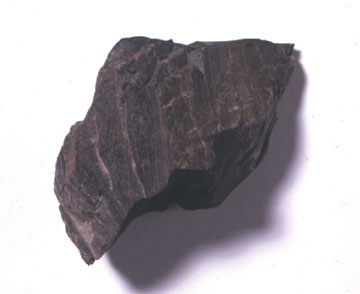 |
| Shale |
Shale is often found in slow-moving water, lakes, lagoons, river deltas, floodplains, and offshore from beach sands.
Minerals
QuartzFeldspar
Hornblende
pyrite, halite, calcite, mica
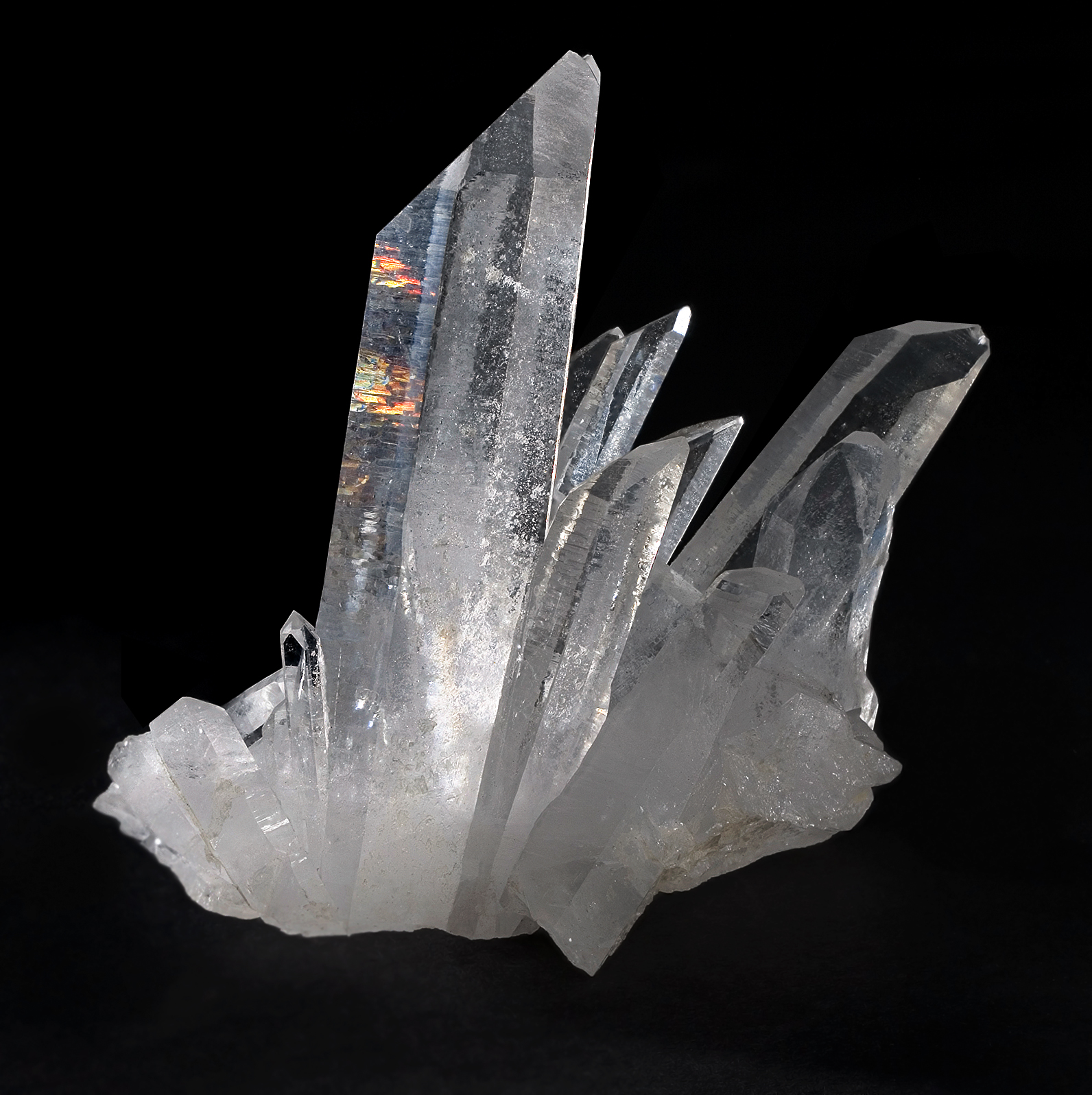 |
| Quartz |
Tuesday, October 2, 2012
plants around campus
 |
| Itea |
The Itea is a perennial shrub that grows actively in the spring. The plant grows well in medium to wet soil and full sun to part shade. The Itea plant can grow up to four feet tall and produce fragrant white flowers.
 |
| Loropetalum |
The Loropetalum is a purplish-green shrub that produces flowers in the spring. The shrub has asymmetrical leaves that grow on the rounded shrub. They grow in well drained soil in full or partial sunlight.
 |
| Holly Bush |
The Holly bush, also called the Illex, is a slow-growing bush that can reach up to 33 feet if left unattended. The bushes have glossy leaves that are often pointed at the end. Many produce small reddish fruits that ripen in the winter.
 |
| Marigold |
Marigolds are orange or yellow flowers that bloom in the spring, summer and fall. They grow in various types of soil and need plenty of sunshine. There are about 50 different species of marigolds.
 |
| Camelia |
Camelia's are flowering plants native to eastern and southern Asia. Debate over number of species ranges from 100 to 250. They are actually small trees that can grow up to 60 feet tall, though they are usually trimmed. They grow large flowers varying in hues from white to red. They grow well in acidic soils with plenty of water, and usually grow rather quickly.
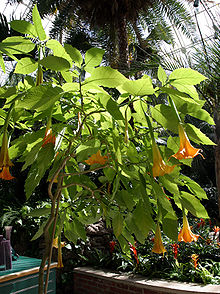 |
| Angel's Trumpet |
The Angel's Trumpet, also known as Brugmansia, is a shrub-like flowering plant that grows large trumpet-shaped flowers in varying colors. Though nice to look at, this plant is toxic when ingested. It has hallucinogenic effects, but also causes a number of other symptoms which will eventually lead to death. Angel's Trumpet is native to tropical climates but have been adapted to other climates as well.
 |
| Pecan Tree |
The Pecan tree is a tree native to North America. It's name comes from an Algonquian word that means 'a nut requiring a stone to crack.' They grow from 66 to 180 feet and produce pecans in the fall. The pecans grow inside a woody shell contained by a softer husk.
 |
| Sycamore Tree |
The Sycamore tree is native to North America. It is distinguishable by its bark, which has an irregular color due to the flaking off of its bark. Sycamores can grow from about 98 to 130 feet in high. They have dark, rough bark on the lower parts of the tree, with light, smooth bark towards the top.
 |
| Magnolia Tree |
The Magnolia grandifloras are evergreen trees native to the southeastern United States. They grow up to 90 feet and have large dark green leaves. They also produce large, white flowers in the late spring.
Subscribe to:
Posts (Atom)












